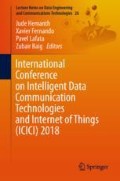Abstract
Improving customer experience is the focus of IT Industry. It is no longer about customer satisfaction, but it is about creating memorable experiences which will help build loyal customers. Hence it is extremely critical to release defect free software. While machine learning techniques were widely used for prediction modelling, creating a reliable predictor which can perform satisfactorily is always a challenge. In this paper, we have proposed a framework using PCA for feature selection and ensemble machine learning algorithms with stratified 10-fold cross validation for building the classification model. The proposed model is tested using 5 projects from NASA Metrics Data program and 4 ensemble machine learning algorithms. Our results show that the prediction accuracy is improved by 0.6% when the reduced dataset is used for classification than using the whole dataset. In comparison with previous research studies, our framework has shown an average of 4.2% increase in performance.
Access this chapter
Tax calculation will be finalised at checkout
Purchases are for personal use only
References
Lessmann, S., Baesens, B., Mues, C., Pietsch, S.: Benchmarking classification models for software defect prediction: a proposed framework and novel findings. IEEE Trans. Softw. Eng. 34(4), 485–496 (2008)
Wang, S., Ping, H.E., Zelin, L.: An enhanced software defect prediction model with multiple metrics and learners. Int. J. Ind. Syst. Eng. 22(3), 358–371 (2016)
Murillo-Morera, J., Castro-Herrera, C., Arroyo, J., Fucntcs-Fernandez, R.: An automated defect prediction framework using genetic algorithms: a validation of empirical studies. Inteligencia Artif. 19(57), 114–137 (2016)
Kalai Magal, R., Jacob, S.G.: Improved random forest algorithm for software defect prediction through data mining techniques. Int. J. Comput. Appl. (0975-8887), 117(23), May 2015
Kaur, A., Malhotra, R.: Application of random forest in predicting fault-prone classes. In: International Conference on Advanced Computer Theory and Engineering (2008)
Kumaresh, S., Baskaran, R, Sivaguru, M.: Software defect classification using bayesian classification techniques. In: IJCA Proceedings on International Conference on Communication, Computing and Information Technology ICCCMIT 2014, 16–20 March 2015
Sastry, K.B.S., Satya Prasad, R.: Software defect prediction using classifier mining. J. Comput. Sci. Eng. 1(4) (2015)
Mende, T., Koschke, R.: Effort-aware defect prediction models. In: 14th European Conference on Software Maintenance and Reengineering (2010)
Singh, P., Verma, S.: An efficient software fault prediction model using cluster based classification. Int. J. Appl. Inf. Syst. (IJAIS), 7(3), May 2014
Zhang, H., Nelson, A., Menzies, T.: On the value of learning from defect dense components for software defect prediction. Promise 2010, 12–13 September (2010
Song, Q., Jia, Z., Shepperd, M., Ying, S., Liu, J.: A General Software Defect-Proneness Prediction Framework. IEEE Trans. Softw. Eng. 37(3), 356–370 (2011)
Sofware Fail watch, 5th Edn., Tricentis. https://www.tricentis.com/software-fai-watch/
Koru, A.G., Liu, H.: An investigation of the effect of module size on defect prediction using static measures. In: Promise 2005, May 2005
Jin, C., Dong, E.M., Qin, L.N.: Software fault prediction model based on adaptive dynamical and median particle swarm optimization. In: Second International Conference on Multimedia and Information Technology (2010)
Witten, I.H., Frank, E.: Data Mining, Practical Machine Learning Tools and Techniques. Morgan Kaufmann, San Francisco (2005)
Shirabad, J.S., Menzies, T.J.: The PROMISE repository of software engineering databases. School of Information Technology and Engineering, University of Ottawa, Canada (2005). http://promise.site.uottawa.ca/SERepository
Author information
Authors and Affiliations
Corresponding author
Editor information
Editors and Affiliations
Rights and permissions
Copyright information
© 2019 Springer Nature Switzerland AG
About this paper
Cite this paper
Dhamayanthi, N., Lavanya, B. (2019). Improvement in Software Defect Prediction Outcome Using Principal Component Analysis and Ensemble Machine Learning Algorithms. In: Hemanth, J., Fernando, X., Lafata, P., Baig, Z. (eds) International Conference on Intelligent Data Communication Technologies and Internet of Things (ICICI) 2018. ICICI 2018. Lecture Notes on Data Engineering and Communications Technologies, vol 26. Springer, Cham. https://doi.org/10.1007/978-3-030-03146-6_44
Download citation
DOI: https://doi.org/10.1007/978-3-030-03146-6_44
Published:
Publisher Name: Springer, Cham
Print ISBN: 978-3-030-03145-9
Online ISBN: 978-3-030-03146-6
eBook Packages: Intelligent Technologies and RoboticsIntelligent Technologies and Robotics (R0)

